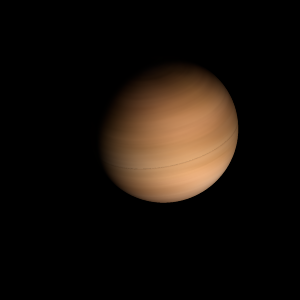|
|
Space Astro
|
Info for exoplanet "Hidoradita"
| Scientific (actual) data |
|---|
| Name | PDS 70 b |
| Planet status | Confirmed |
| Planet mass | 7 |
| Orbital period | 45108 |
| Semi major axis | 22.7 |
| Discovered | 2018 |
| Updated | 2019-10-25 |
| Publication | Published in a refereed paper |
| Detection type | Imaging |
| Mass measurement type | Spectrum |
| Star name | PDS 70 |
| Right ascension | 212.04° |
| Declination | -41.4° |
| Mag v | 12.233 |
| Star distance | 113.43 |
| Star mass | 0.76 |
| Star radius | 1.26 |
| Star sp type | K7 |
| Star age | 0.0054 |
| Star temperature | 4237 |
| Star detected disc | Imaging |
| Star alternate names | V* V1032 Cen, 2MASS J14081015-4123525 |
| Wikipedia article | PDS 70 b |
Back
| |
| Fictional info (?) |
|---|
| Suggested name | Hidoradita |
| Planet type | Large cold gas giant |
| Its north and south poles, therefore, lie where most other planets have their equators. |
| Atmosphere | Helium | 50% |
| Molecular hydrogen | 28% |
| Neon | 21% |
| Nitrogen | 0.0078% |
| Carbon monoxide | 2.8E-5% |
| Atmospheric pressure | 0.4 bar |
 |
| Moon | Teusska | Small round ice moon |
| Google search for Hidoradita |
|
Website by Joachim Michaelis
|
|
|
|